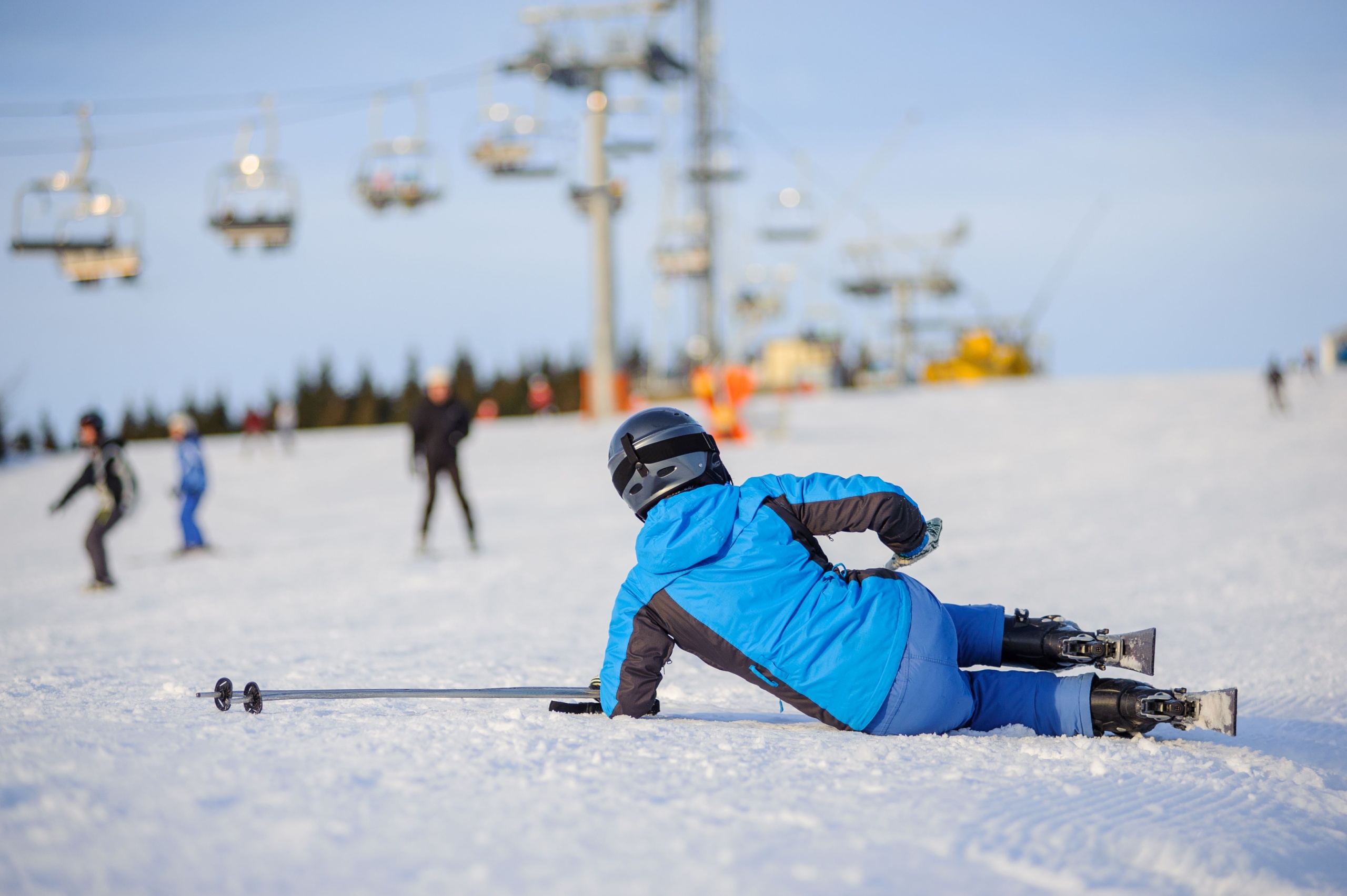Originally posted on: https://ciecka.com/winter-sports-injuries-when-fun-turns-into-a-legal-matter/
Engaging in winter sports like skiing, snowboarding, and ice skating is a thrilling experience, but it’s not without risks. Each glide and jump carries the potential for injuries, ranging from minor sprains to more severe conditions like broken bones, torn ligaments, and concussions. While most enthusiasts focus on the excitement and adventure these sports offer, the possibility of injuries leading to legal issues is often overlooked. This article aims to shed light on common winter sports injuries and the circumstances under which they might escalate into legal matters, such as negligence or unsafe conditions.
Common Winter Sports Injuries
Engaging in winter sports brings with it a certain level of risk, and understanding these risks is essential for anyone participating in these activities. The nature of winter sports often involves high speeds, slippery surfaces, and cold temperatures, all of which contribute to the likelihood of injuries. Among the most common injuries are those related to skiing, snowboarding, and ice skating, each with its unique set of risks.
Skiing Injuries
Skiing, one of the most popular winter sports, is associated with a variety of injuries. The most common skiing injuries include knee damage such as anterior cruciate ligament (ACL) or medial collateral ligament (MCL) tears. These injuries often occur due to the twisting motions and sudden changes in direction that are inherent to the sport. Additionally, skiers are at risk of shoulder dislocations, wrist fractures, and head injuries, including concussions. The severity of these injuries can range from minor, requiring short-term rest and recovery, to more serious injuries necessitating medical intervention and prolonged rehabilitation.
Snowboarding and Ice Skating Injuries
Snowboarding, while similar to skiing in its environment, presents different risks due to the nature of the equipment and the sport’s mechanics. Snowboarders often suffer from wrist and ankle injuries, as falls are common, especially for beginners. The fixed position of the feet on the board can also lead to lower limb injuries, particularly in the knees and ankles. On the other hand, ice skating, with its combination of slippery surfaces and sharp blades, often leads to cuts, bruises, and fractures. The most common injuries in ice skating are to the wrists and ankles, as well as head injuries from falls.
Negligence in Winter Sports
Negligence in winter sports can transform a day of fun into a serious legal matter. Understanding the various forms of negligence is crucial for both participants and operators of winter sports facilities. Negligence can occur due to a range of factors, from defective equipment to unmarked hazards, and understanding these can help in identifying when a legal claim might be necessary.
Defective Equipment
One common form of negligence in winter sports relates to equipment. Defective or poorly maintained equipment, such as ski bindings, snowboards, or ice skates, can lead to severe injuries. For instance, ski bindings that fail to release properly can result in serious leg injuries. Similarly, a snowboard with structural weaknesses might break under pressure, causing the rider to fall and sustain injuries. In such cases, the manufacturers or rental facilities could be held liable under product liability laws for providing defective equipment.
Unmarked Hazards and Inadequate Maintenance
Another significant concern is unmarked hazards on ski slopes or ice rinks. Hazards like hidden rocks, ice patches, or uneven surfaces should be clearly marked or remedied by the facility operators. Failure to do so can lead to accidents, for which the operators may be held liable under premises liability laws. Additionally, inadequate snowmaking or grooming of slopes can create dangerous conditions for skiers and snowboarders. The responsibility of the resort extends to ensuring that the slopes are safe for use and that any potential hazards are adequately managed.
Overcrowded Slopes and Improper Instruction
Overcrowded slopes are a recipe for accidents in winter sports. When ski resorts fail to control the number of people using the slopes at a given time, it increases the risk of collisions and injuries. Similarly, improper instruction or inadequate training provided by ski or snowboarding schools can lead to accidents. Instructors and schools have a duty to provide proper training and ensure that participants are aware of and can handle the risks involved in these sports. Negligence in this area can lead to serious accidents, particularly for beginners who rely heavily on the instruction provided.
The Role of Resort Operators and Instructors
Resort operators and instructors play a crucial role in ensuring the safety of winter sports participants. They are responsible for providing a safe environment, which includes regular maintenance of equipment and facilities, proper training of staff, and effective management of risks on the slopes or rinks. When this duty of care is breached, resulting in an injury, they can be held legally accountable.
Legal Claims for Winter Sports Accidents
When winter sports activities lead to accidents and injuries, understanding the legal implications is crucial for both victims and facility operators. In many cases, these incidents can give rise to legal claims, particularly when negligence or unsafe conditions are involved. The nature of these legal claims can vary, encompassing personal injury lawsuits, premises liability, and product liability, each addressing different aspects of negligence and responsibility.
Personal Injury Lawsuits in Winter Sports
Personal injury lawsuits are common in cases where negligence directly leads to an injury. For instance, if a skier collides with another due to the latter’s reckless behavior, the injured party may have grounds for a personal injury claim against the individual at fault. Similarly, if a snowboarder is injured due to a poorly maintained trail or slope, the resort may be liable for failing to ensure safe conditions. These lawsuits seek compensation for the injured party, covering medical expenses, lost wages, and other damages resulting from the injury.
Premises Liability in Ski Resorts and Ice Rinks
Premises liability claims arise when injuries are caused by unsafe conditions on the property, such as icy walkways, poorly maintained facilities, or unmarked hazards on ski slopes. In these cases, the property owners or operators can be held liable for failing to maintain a safe environment for guests. This aspect of law requires the injured party to prove that the property owner was aware or should have been aware of the hazardous condition and failed to take appropriate action to remedy it.
There are immunity laws and waiver of claim clauses in most, if not all, ski resort ticket purchases that are rigorously enforced by states where skiing and winter sports are a big business. These limitations on liability are difficult and sometimes impossible to pierce. It is mostly when there are catastrophic injuries involved that lawsuits are filed to try pierce the immunities as it is very costly, difficult, and time consuming to sue a ski resort or related entity in a state which solicits the ski and snow related vacationers and visitors. These states tend to protect their snow related industries. Smaller injury cases are seldom successful or even pursued. The facts of each accident must be reviewed by an attorney familiar with these types of cases. Lawsuits generally have to be filed in the state where the accident occurred, requiring a referral or co counseling agreement by your attorney. The more serious the injury, the more likely a case will be pursued.
Product Liability and Defective Equipment
Product liability claims come into play when injuries are caused by defective or malfunctioning equipment. This could include ski bindings that fail to release, defective helmets, or faulty snowboards. In such cases, the manufacturer or retailer of the equipment can be held responsible. These claims hinge on proving that the equipment was inherently defective and that this defect directly led to the injury.
The Role of Legal Representation
Navigating the complexities of legal claims in winter sports accidents can be challenging. This is where specialized legal representation becomes invaluable. With expertise in personal injury law and a deep understanding of the specific challenges associated with winter sports injuries, personal injury lawyers can guide victims through the process of filing a claim, negotiating settlements, and, if necessary, representing their interests in court.
The Law Offices of Vincent J. Ciecka: Your Legal Ally
When dealing with the legal complexities of winter sports injuries, having a knowledgeable and experienced legal team is invaluable. At the Law Offices of Vincent J. Ciecka, we offer specialized legal representation for athletes and individuals injured in winter sports. With a deep understanding of the nuances of personal injury law as it applies to winter sports, we are well-equipped to navigate the often-complex legal landscape that these cases present.
Our team of personal injury lawyers brings a wealth of experience and specialized knowledge to the table. We understand the unique aspects of winter sports injuries, from the common causes and types of injuries to the specific legal standards and regulations governing these activities. Whether it’s a case of negligence on the slopes, a product liability issue with sports equipment, or a premises liability claim against a resort or rink, our lawyers are adept at handling these specific challenges. We work diligently to investigate each case, gather necessary evidence, and build a strong argument to support our clients’ claims.
Navigating Winter Sports Legal Challenges with Expertise
In conclusion, winter sports, while exhilarating, carry inherent risks that can sometimes lead to serious injuries and complex legal situations. Understanding the nuances of winter sports injuries, from the types of injuries common in skiing, snowboarding, and ice skating to the legal implications of accidents on the slopes or rinks, is crucial for anyone participating in these activities. When these injuries are compounded by factors like negligence, defective equipment, or unsafe conditions, the need for expert legal guidance becomes paramount. For anyone facing the aftermath of a winter sports injury, seeking professional legal advice is a critical step. Personal injury lawyers play an essential role in ensuring that your legal rights are protected, and that the best possible outcome is achieved.




